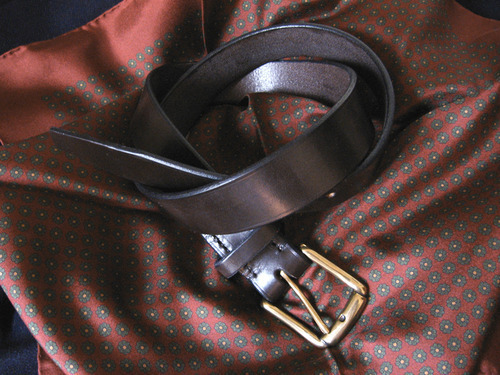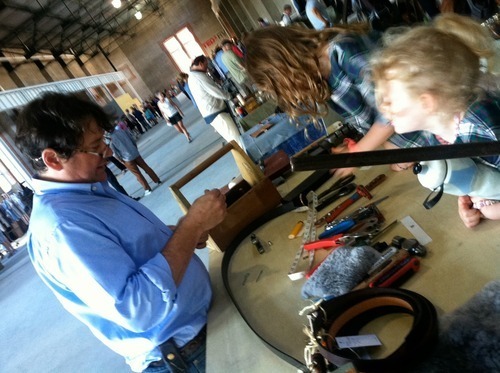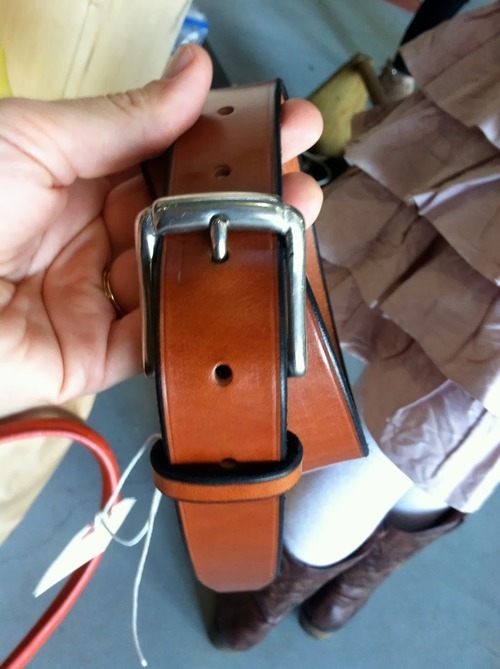
It’s not hard to find yourself buying too much when you have an interest in clothing, but on the upside, the longer you’ve been interested, the easier it is to be selective. I remember when I first started trying to dress well, I accumulated all sorts of accessories I didn’t need. Like a useless number of belts, which, over time, I found myself reaching for only a select few – dress belts with a stitched edge to wear with woolen trousers; thick leather belts to wear with jeans; and simple bridle leather belts to wear with chinos. Things such as ribbon belts, surcingles, or belts with unique closures (o-rings, D-rings, etc) all sat untouched in my closet, as I’ve found them to look too distracting when actually worn.
Recently, Marcus Wiley gifted me one of his bridle leather belts. Bridle leather, as many may know, is a vegetable tanned cowhide that has been finished with fats, waxes, and tallow. The leather was originally created for bridle reins used in horse riding, which is of course where the material takes its name. Marcus sources his bridle leather from a tannery located in the West Midlands region of England, and it’s as good as any other bridle leather I’ve seen. The material is flexible enough to be manipulated, but strong enough to hold, and both sides have been well finished enough to not rub.
Creating a belt is simple enough, though it does take fifteen steps. The leather gets tail punched, creased, beveled, and then dyed. The buckles he uses (which are made through a wax casting method) are then attached by handstitching the end of the belt. Finally, the edges are burnished and the final product is polished and stamped before being sent off to the customer. Marcus’ belts are just as nicely made as those that I’ve bought from Equus (another fine maker of bridle leather belts), and both seem better than the one I’ve bought from Narragansett. The stitching at the end, for example, is done much more cleanly on my Wiley Brothers belt than my Narragansett.
One can find Marcus’ products at any number of places. He happens to make belts for companies such as Ledbury, J. Press, Sid Mashburn, and JL Powell. Kind of surprising given that he’s a one-man shop (though I hear he recently just got in an apprentice). You can also order directly from him through his website. Mine is the “traditional” model made from a richly colored Havana brown. It’s very well made, but also very simple looking, which over the years is exactly the kind of belt I’ve found I reach for the most.


